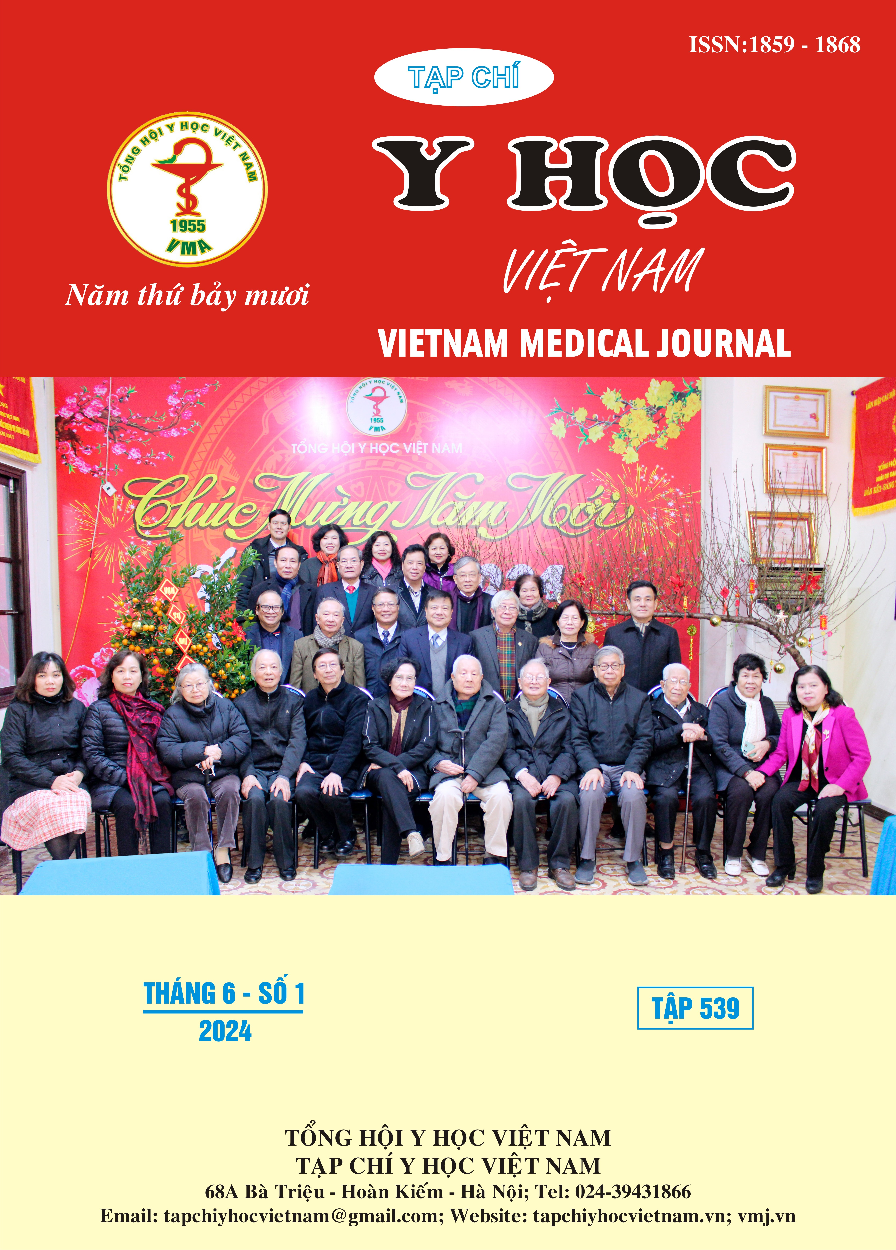REVIEW THE USE OF FIBROBLAST GROWTH FACTOR (FGF-2) IN PERIODONTAL TISSUE REGENERATION
Main Article Content
Abstract
Growth factors have been successfully applied for regenerating periodontal tissues, particularly in cases of intrabony defects. Among them, fibroblast growth factor (FGF-2) is thought to have the ability to promote periodontal ligament regeneration. FGF-2 induces angiogenic activity and a considerable proliferation of undifferentiated mesenchymal cells in the periodontal ligament [1],[2]. These activities are directly related to the repair and regeneration process of periodontal tissues. Thus, this review aimed to identify, assess, and analyze both the effectiveness of periodontal tissue regeneration and clinical indications when using FGF-2. Published scientific articles regarding the effectiveness of using fibroblast growth factor FGF-2 in clinical regeneration of periodontal tissues are targeted as research objects. This review was performed following the PRISMA - ScR criteria (PRISMA Extension for Scoping Reviews) [3] and the guidelines from the Cochrane Handbook for Systematic Reviews of Interventions [4]. The research questions were formulated according to the PICO format. Results: Out of 1.243 articles from three databases: Pubmed, Google Scholar and ScienceDirect. Twenty-eight articles were shortlisted and nine that satisfied the inclusion criteria after screening full-text were included in the final review. All selected articles were controlled clinical intervention studies. The study results showed that the rate of increase in alveolar bone height in the test groups using FGF-2 combined with the carrier (58.6 ± 46.7%) was higher than the control group using the carrier alone (15.1 ± 21.9%) or only flap surgery (13.3 ± 20.6%); The rate of increasing bone height in teeth in the test groups combining FGF-2 and artificial bone achieved the highest efficiency with 74.6 ± 20.0%, higher than the control group using only FGF-2 (29.3 ± 13.3 %) or using only bone (62.5 ± 26.4%). The average increase in clinical re-adhesion in both the control group and the internal intervention group was 2mm. However, no statistically significant differences were found between all groups. Conclusions: The use of FGF-2 in periodontal tissue regeneration can significantly increase alveolar bone height compared to control groups without FGF-2, and the most effective concentration is FGF-2 0.3%. It is strongly recommended to combine growth factors with artificial bone to enhance clinical efficacy, as using FGF-2 alone may not yield optimal results.
Article Details
Keywords
Fibroblast growth factors, intrabony defects, periodontal tissue regeneration.
References
2. Takayama S-i, Yoshida J, Hirano H, Okada H, Murakami S (2002), Effects of Basic Fibroblast Growth Factor on Human Gingival Epithelial Cells, Journal of Periodontology, 73(12), 1467-1473.
3. Tricco AC, Lillie E, Zarin W, et al (2018), PRISMA Extension for Scoping Reviews (PRISMA-ScR): Checklist and Explanation, Ann Intern Med, 169(7), 467-473.
4. Higgins JPT, Thomas J, Chandler J, et al (2019), Cochrane Handbook for Systematic Reviews of Interventions, Wiley.
5. Pouliou MM, Fragkioudakis I, Doufexi AE, Batas L. The role of rhFGF-2 in periodontal defect bone fill: A systematic review of the literature. J Periodontal Res. Aug 2023;58(4):733-744. doi:10.1111/jre.13131
6. Li F, Yu F, Xu X, et al. Evaluation of Recombinant Human FGF-2 and PDGF-BB in Periodontal Regeneration: A Systematic Review and Meta-Analysis. Sci Rep. Mar 6 2017;7(1):65. doi:10.1038/s41598-017-00113-y
7. Cortellini P, Tonetti MS. Focus on intrabony defects: guided tissue regeneration. Periodontol 2000. Feb 2000;22:104-32. doi:10.1034/j.1600-0757.2000.2220108.


